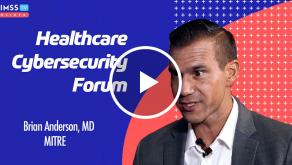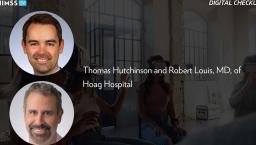Healthcare IT in the multi-cloud era: Are we better off?

Photo: sturti/Getty Images
After rushing into cloud adoption, healthcare IT leaders are now shifting from a “cloud first” to a “cloud smart” approach. They are stepping back from initial (and primarily public) cloud use to determine where their applications and assets best fit in today’s multi-cloud environment.
“For years, we saw organizations moving to the cloud just because it was perceived as what everyone else was doing as a way of making IT easy,” said Michael Fredericks, Dell Technologies’ Multi-Cloud Healthcare Specialist. “Now, many organizations are finding that not everything runs better in a public cloud due to a variety of factors like cost, latency, competition and compliance.”
Meanwhile, those who have held firmly to no or private-only cloud use are seeing some merit in moving certain workloads to public clouds. Still others are looking at “cloud-adjacency” to help control costs and data sprawl while retaining control and opening up services available in the public cloud.
Staying flexible and agile as the tech landscape evolves
Cloud improvements across the spectrum have brought healthcare IT leaders to the proverbial crossroads. They must decide which public, private or hybrid cloud technologies will help them fulfill operational goals based on technical requirements, industry drivers and anticipated budget.
Fredericks recommends first conducting a comprehensive application audit to determine workload placements. In his work for Dell, he’s found that health systems typically place applications in the following categories: Those amenable to rapid infrastructure modernization in software-defined datacenters; those that have tight dependencies on underlying architectures; edge-computing services; and more modern applications running in containers and as microservices.
These audits also typically reveal outdated and unused applications, as well as hidden storage costs associated with multiple copies of unstructured data residing in multiple locations.
Deciding a smarter path to cloud adoption
Some healthcare organizations remain averse to adopting cloud services, preferring that all critical applications reside in on-premises datacenters. “But, if you look across the entire organization, there’s a good chance that someone somewhere is using a cloud application, whether it’s for email, software-as-a-service or other shadow-IT functions,” Fredericks said.
This means that every organization should consider if, when and how to migrate resources to a multi-cloud environment. Key considerations include cost savings from consolidating storage and reducing management burden, as well as incorporating artificial intelligence and machine learning solutions that require massive datasets and processing power. A secure cloud IT infrastructure, built on common platforms, makes data more accessible and portable while easing IT operations.
Fredericks noted growing interest in “cloud-adjacent” models to help curb costs and deal with data sprawl common in cloud use. A cloud-adjacent partner provides similar types of services as public cloud providers but remains neutral – acting like a middleman between a healthcare organization and cloud provider. This allows organizations to take advantage of the best services without duplicating data or giving up key aspects of flexibility and control.
Organizations seeking any cloud approach should select strategic partners with a solid understanding of both healthcare and cloud technologies. This will ensure that their healthcare IT easily adapts to ever-changing technological, competitive and financial landscapes.
“Don’t assume that locking into any one public cloud platform is your only option to ease complexity and reduce cost,” Fredericks advised. “Challenge your strategic technology partners to come up with a plan that’s most beneficial and flexible for you – versus what’s right for them.”






























